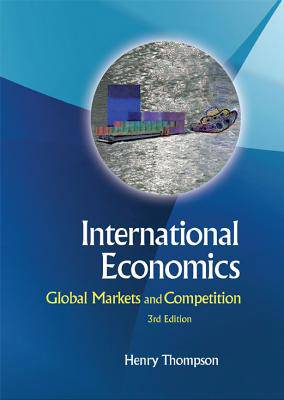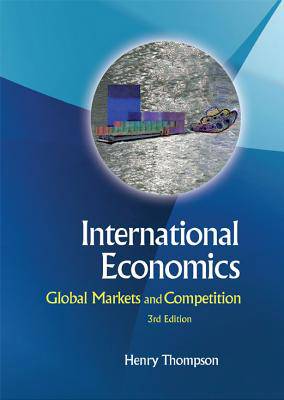
- Afhalen na 1 uur in een winkel met voorraad
- Gratis thuislevering in België vanaf € 30
- Ruim aanbod met 7 miljoen producten
- Afhalen na 1 uur in een winkel met voorraad
- Gratis thuislevering in België vanaf € 30
- Ruim aanbod met 7 miljoen producten
Zoeken
International Economics: Global Markets and Competition (3rd Edition)
Henry Thompson
Paperback | Engels
€ 103,95
+ 207 punten
Omschrijving
This book integrates the microeconomics of trade with international finance and open economy macroeconomics. The emphasis throughout is on international competition and the limits of trade policy.Economics began with a debate over tariffs. Domestic industries lobby for protection against foreign competitors or export subsidies. Government policy makers dole favors in return for cash and votes. Governments negotiate free trade agreements but disregard them when possible with tariffs, export subsidies, and other policies to influence foreign trade and investment. The forces of international competition, however, eventually overwhelm government policy.This text presents the critical issues of international trade and finance. Trade theory includes partial equilibrium market analysis, neoclassical trade models, constant cost production, factor proportions production, and models of industrial organization. The text integrates concepts from international finance and the basic models of open economy macroeconomics.The presentation uses graphs with numerical examples making the theory easier for students, especially when combined with more general classroom presentation. The text does not assume previous courses in intermediate economics or calculus but develops the theory with simple tools. Numerous questions give students confidence to use the theoretical models and concepts.Over 250 boxed examples illustrate the theory, many with visually descriptive charts and plots. The text is concise in its presentation style. Students enjoy its clear straightforward style and instructors notice the difference on exams.
Specificaties
Betrokkenen
- Auteur(s):
- Uitgeverij:
Inhoud
- Aantal bladzijden:
- 452
- Taal:
- Engels
Eigenschappen
- Productcode (EAN):
- 9789814307024
- Verschijningsdatum:
- 30/09/2010
- Uitvoering:
- Paperback
- Formaat:
- Trade paperback (VS)
- Afmetingen:
- 178 mm x 251 mm
- Gewicht:
- 884 g

Alleen bij Standaard Boekhandel
+ 207 punten op je klantenkaart van Standaard Boekhandel
Beoordelingen
We publiceren alleen reviews die voldoen aan de voorwaarden voor reviews. Bekijk onze voorwaarden voor reviews.








